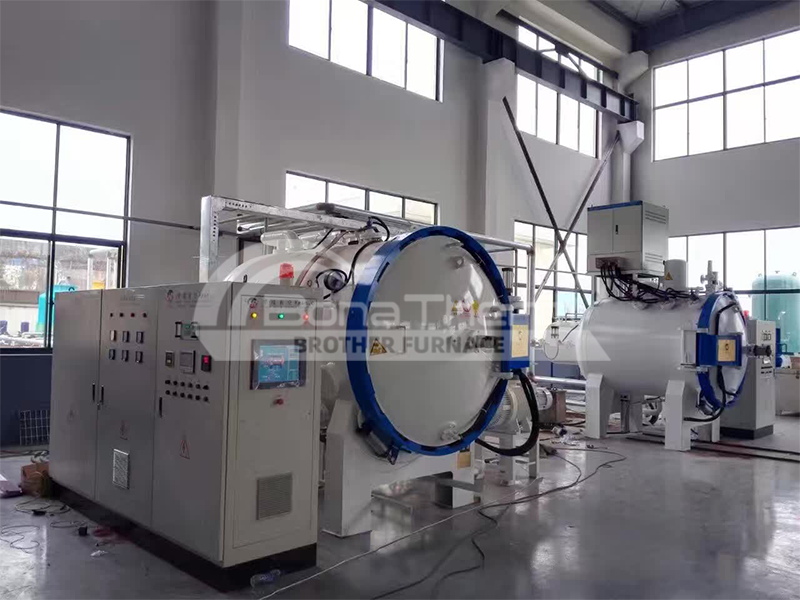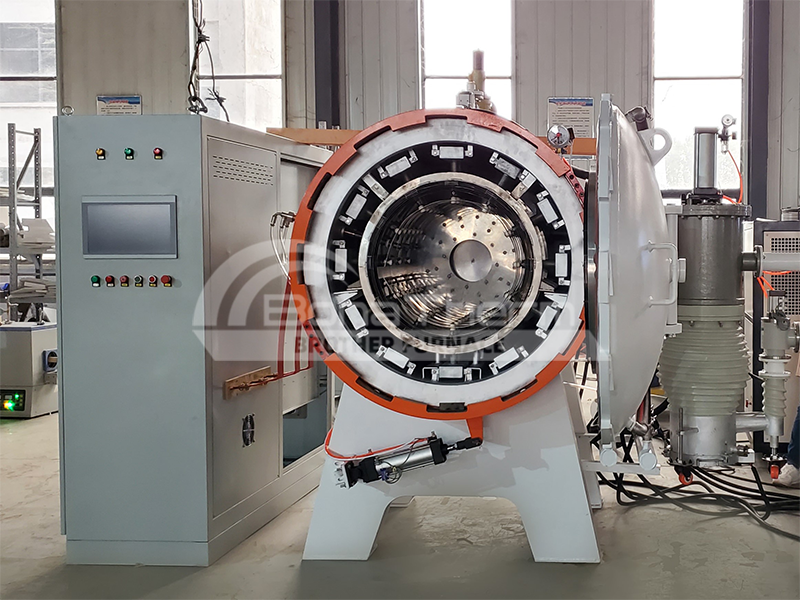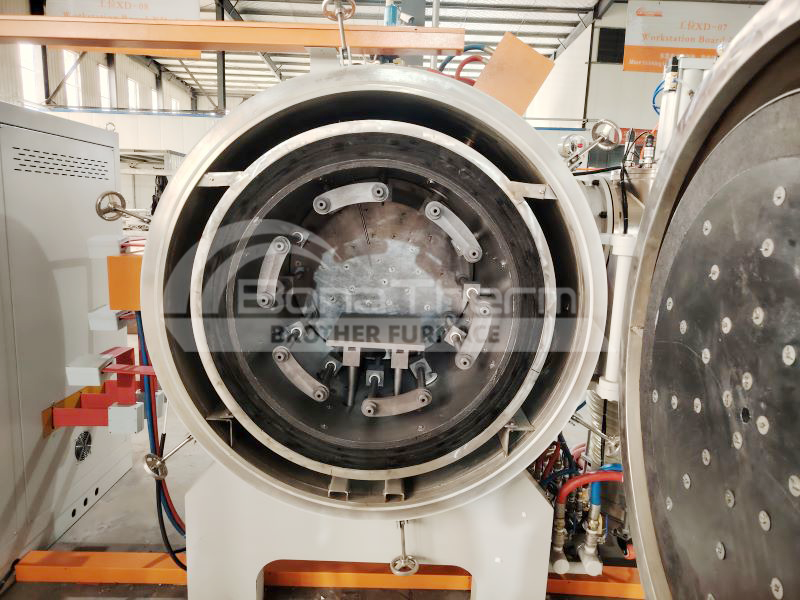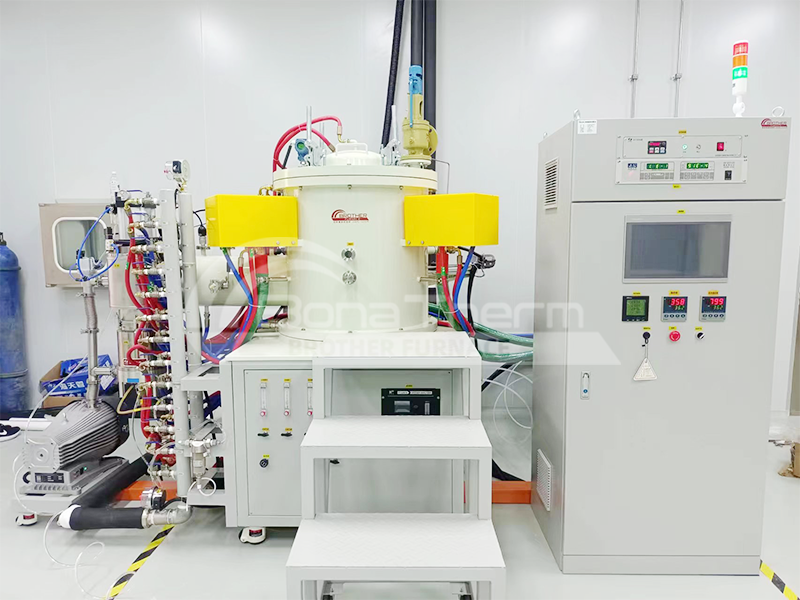The Four Core Processes of Heat Treatment: Elevated by Vacuum Heat Treatment Furnaces
- By: Brother Furnace
- 2025-11-19 01:03
As the backbone of modern manufacturing, heat treatment transforms raw metallic materials into high-performance components by precisely modifying their internal microstructure.
Its four core processes—quenching, annealing, tempering, and normalizing, collectively referred to as the "Four Fires" of heat treatment—dictate the mechanical properties of metals.
Today, vacuum heat treatment furnaces are redefining these time-tested techniques: eliminating oxidation, enhancing processing precision, and unlocking new application possibilities for high-value materials across the aerospace, automotive, and electronics sectors.

1. Quenching: Hardening Metals with Vacuum-Powered Precision
1.1 What Is Quenching? Core Purpose Unveiled
Quenching stands as the most intensive and widely applied heat treatment method. Its primary objective is to significantly boost metal hardness and wear resistance—essential properties for components exposed to friction and impact.
1.2 How Quenching Works: From Heating to Microstructure Transformation
The process commences with heating a metal workpiece to its alloy-specific austenitizing temperature, followed by a holding period to ensure uniform heat penetration.
The defining step is rapid cooling, with two primary industrial methods: oil and gas quenching.
Oil quenching uses mineral or synthetic oils for heat transfer, which is applicable for carbon and low-alloy steels.
Gas quenching utilizes inert gases like nitrogen or argon, enabling controlled cooling and avoiding contamination of the workpiece surface.
Traditional quenching in atmospheric furnaces suffers from two critical drawbacks:
1. Surface oxidation: Leads to scale formation and reduced surface hardness
2. Uneven cooling: Frequently causes component distortion or cracking, especially for parts with complex geometries
1.4 Vacuum Furnaces: Revolutionizing Quenching Quality and Safety
Vacuum furnaces comprehensively address conventional quenching limitations.
Their oxygen-depleted environment preserves the metal's surface finish, eliminating costly post-quench grinding and reducing production costs.
A key advancement, vacuum gas quenching, combines inert gas cooling with a vacuum setting to deliver consistent results.
Its residue-free nature also eliminates post-treatment cleaning, streamlining workflows.
2. Annealing: Softening Metals with Controlled Purity
2.1 Annealing Defined: The "Softening and Stabilizing" Thermal Process
In contrast to quenching, annealing is a gentler thermal process with three primary objectives:
1. Softening metals to facilitate subsequent processing
2. Relieving internal stresses induced by processes such as casting and machining
3. Refining grain structure to enhance material uniformity
2.2 Step-by-Step Annealing: Controlling Cooling for Ductility
Annealing follows a three-stage process:
1. Heating the metal to a critical temperature specific to its alloy composition
2. Maintaining that temperature to achieve complete thermal homogeneity
3. Cooling the workpiece slowly, often by allowing it to cool naturally within the furnace
This gradual cooling allows the metal's microstructure to revert to a softer, more ductile state, making machining, forging, or forming into intricate shapes easier.
2.3 Atmospheric Annealing Pitfalls: Decarburization and Oxidation Risks
Atmospheric annealing presents notable limitations:
For high-carbon steels, it often causes decarburization—the loss of carbon from the material's surface
Titanium alloys, meanwhile, are prone to oxidation during the process
Both issues degrade the material's mechanical properties and functional performance.
2.4 Vacuum Annealing Advantages: Purity and Uniformity Guaranteed
Vacuum furnaces overcome these challenges by maintaining a pure, low-pressure environment.
The precise temperature control guarantees uniform grain refinement, imparting consistent ductility across the entire component—an essential requirement for critical parts like automotive gears and aerospace fasteners.

3. Tempering: Tuning Hardness for Practical Application
3.1 Tempering Explained: Balancing Hardness and Toughness Post-Quenching
Tempering is almost exclusively paired with quenching. Quenching, for all its ability to achieve extreme hardness, renders metals excessively brittle.
Tempering addresses this brittleness. Crucially, it retains the desired hardness level.
The result is a balanced material, one that is suitable for real-world applications.
3.2 Tempering Mechanism: Fine-Tuning Microstructure for Reliability
The tempering process involves three key steps:
1. Reheating the quenched metal to a temperature below its critical point. This temperature typically ranges from 150°C to 650°C
2. Holding the metal at that temperature for a specified duration
3. Cooling the metal in air or a controlled medium
This controlled process adjusts the metal's microstructure, reducing internal stresses, enhancing toughness, and stabilizing dimensions for long-term performance reliability.
3.3 Why Vacuum Furnaces Excel at Tempering: Precision That Matters
Tempering requires exceptional temperature precision; even a 10°C deviation can either over-soften the metal or leave it unacceptably brittle.
Vacuum furnaces excel in this regard, offering temperature control within a ±1°C range.
The oxygen-free environment also prevents the formation of oxide films that could interfere with the tempering reaction.
This level of consistency has established vacuum furnaces as the industry standard for critical components, such as tool steel dies and automotive crankshafts.
4. Normalizing: Refining Structure for Balanced Performance
4.1 What Sets Normalizing Apart: Beyond Annealing’s Slow Cooling
Normalizing is often compared to annealing, as both involve heating metals to critical temperatures to refine microstructure.
The key difference lies in cooling: normalizing uses faster cooling rates, leading to distinct microstructures and mechanical properties.
This makes it versatile for pre-machining or final treatment of structural metals needing stability without extreme hardness.
4.2 Normalizing in Action: Air Cooling for Balanced Strength
Like annealing, normalizing begins with heating the metal to its critical temperature. However, instead of slow furnace cooling, the workpiece is cooled in still air to accelerate heat dissipation.
This faster cooling rate produces a finer, more uniform microstructure, resulting in a balanced combination of strength and toughness—properties that make normalized metals ideal for structural components.
4.3 Traditional Normalizing Hurdles for High-Alloy Metals
Atmospheric normalizing faces significant challenges with high-alloy metals such as nickel-based superalloys, often leading to:
1. Uneven cooling
2. Surface contamination
Both issues compromise material quality and structural integrity.
4.4 Vacuum Technology: Overcoming Normalizing’s Core Challenges
Vacuum furnaces address these issues through precise temperature regulation and customizable cooling control.
Operators can replicate air-cooling conditions while maintaining a vacuum environment, ensuring uniform heat distribution across the workpiece.
This capability is crucial for large components, such as industrial valves and construction steel beams, where an inconsistent microstructure could lead to catastrophic failure under load.
Additionally, the vacuum environment prevents the formation of brittle intermetallic phases, further enhancing the metal's reliability and service life.

The Synergy of Classic Processes and Modern Vacuum Technology
The "Four Fires" of heat treatment have been refined over centuries, forming the foundation of metal processing. Yet their full potential has only been unlocked through the integration of vacuum heat treatment furnaces.
As industries push the boundaries of material performance, vacuum heat treatment furnaces stand as a linchpin technology.
They seamlessly bridge time-honored metallurgical wisdom with modern engineering demands, ensuring that the "Four Fires" of heat treatment continue to drive innovation in every high-stakes application.
- Pre: Vacuum Graphite Furnaces: High-Temperature Powerhouse for Innovation
- Next: Sorry!



